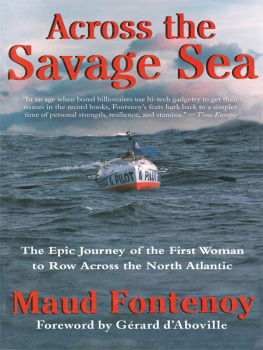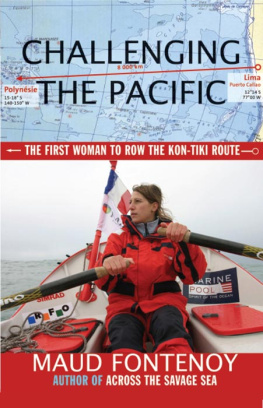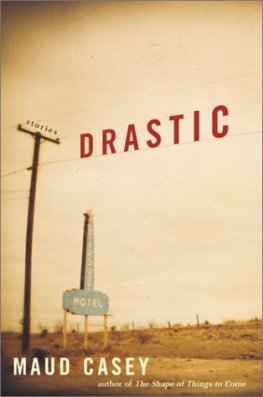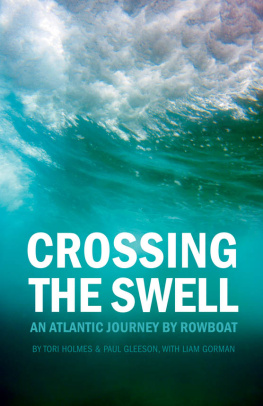Copyright 2004, 2012 by Editions Robert Laffont
Translation copyright 2005, 2012 by Arcade Publishing, Inc.
All Rights Reserved. No part of this book may be reproduced in any manner without the express written consent of the publisher, except in the case of brief excerpts in critical reviews or articles. All inquiries should be addressed to Arcade Publishing, 307 West 36th Street, 11th Floor, New York, NY 10018.
Arcade Publishing books may be purchased in bulk at special discounts for sales promotion, corporate gifts, fund-raising, or educational purposes. Special editions can also be created to specifications. For details, contact the Special Sales Department, Arcade Publishing, 307 West 36th Street, 11th Floor, New York, NY 10018 or .
Arcade Publishing is a registered trademark of Skyhorse Publishing, Inc., a Delaware corporation.
Visit our website at www.arcadepub.com.
10 9 8 7 6 5 4 3 2 1
Library of Congress Cataloging-in-Publication Data is available on file.
ISBN: 978-1-61145-106-1
eISBN: 978-1-62872-497-4
Printed in the United States of America
To Marc, my guardian angel
To follow the dream, and again to follow the dreamand soalways usque ad finem...
Joseph Conrad, Lord Jim
Contents
P ART ONE
The White Hell of the Grand Banks of Newfoundland
P ART TWO
Misleading Sun on the Gulf Stream
P ART THREE
Contrary Winds
Foreword
I WANT TO ROW ACROSS THE A TLANTIC ALONE.
The plan took my breath away. She wanted to cross the immensity of the ocean in a tiny boat, using a pair of oars as her sole means of propulsion. Such a feat would depend entirely on her will, her tenacity. She would need the courage of Guillaumet, the French aviator, who crashed in the Andes and lived to tell about it. He summed up his battle for survival in this sentence: No animal on earth would have endured what I went through.
Yet when Maud Fontenoy, my goddaughter, announced her plan to me, she wasnt telling the half of it. A point insignificant to the layman but vitally important to the mariner was the direction in which she meant to cross.
The North Atlantic can be crossed either by the southerly routethat is, leaving, say, the Canary Islands, and heading for the West Indiesor by the northerly route, starting from the eastern seaboard of North America and sailing to the coast of Europe.
The American Tori Murden, who had tried this northerly crossing in the summer of 1999 and been forced to quit after several terrifying capsizes, later succeeded in crossing by the southerly route, leaving from the Canaries. On her arrival in Guadeloupe, she said: The highest wave that I encountered on this trip wasnt as high as the smallest wave I ran into up north. No doubt this is something of an exaggeration but it does sum up the situation fairly well.
On the southerly track, you can expect a pleasant climate, dominated by trade winds that almost never reach gale force and, most important, blow in the right direction, guaranteeing steady progress.
On the northerly track, in contrast, crossing from America to Europe, the climatic data are totally different. One might describe it as another world. There, the ocean is dominated by depressions that generate storms, with winds veering from south to west and then the northwest, creating cross-currents highly dangerous for small craft. Some of these depressions, former tropical hurricanes, can come sweeping across the Atlantic, creating nightmarish conditions. Aside from these depressionsthat is, during periods of good weatherit often happens that the winds blow from the east or northeast, thus making any headway impossible.
Up to this time, only six rowersall menhad managed to make this crossing.
All right, Maud, which way do you plan to cross?
By the northerly route, of course. I want to be the first woman to do it.
I spent a long time explaining the dangers of such an undertaking. On this track, many ill-fated attempts had ended with the rowers asking to be taken off, with the boats going down and, in six cases, with death.
Maud understood. She knew the sea and its hazards, but despite my warnings, she stuck to her plan. I gave her still further warnings:
You plan to sail this coming summer. In a few months youve got to find a yard, have the boat built, put together all your gear, and then ship the whole kit and caboodle to the other side of the Atlantic. Thats going to cost you an arm and a leg. Do you have any backers?
No, Im going to look for them. But its not all that important. I workIll take a loan, and if necessary Ill finance the expedition myself.
I had to hand it to her for determination. She was going to row and I felt she could make it. I decided to help her.
If I had tried to paint a grim picture, I still would have been nowhere near the reality. While the French remember the summer of 2003 for its heat wave, it must be recalled that, in the North Atlantic, such exceptionally warm weather was translated into long periods of wind from the east. Imagine Mauds despair at losing, in 24 hours, all the ground she had gained in a week of bitter struggle. Imagine her anguish at seeing her crossing take longer than her worst-case scenarios, with more and more frequent gales, days getting shorter, food and water running low, her landfall increasingly uncertain....
The North Atlantic spared her nothing. True, the uncertainties of the weather form an integral part of the risks of such a voyage, but her sliding seat was torn off by a breaking sea and, even worse, the two desalinators malfunctioned. Anyone else would have thrown in the towel.
Opening this book, you will set out on a bad journey. With Maud, you learn what it is to be sodden and cold off Newfoundland, to feel the dread of being run down by large vessels, and the horror of gale-tossed nights. There, wedged into a tiny cabin, like a prisoner, her limbs swollen, nerves shattered, Maud awaits the final capsize, the rogue sea that will splinter her boat into matchsticks. You will share her pathetic attempts at escape, her rare moments of happiness, communing with nature in the calm after a storm, her hopes for a different life, and a future that will enable her to stand an unbearable present.
But why do it? the skeptics asked. Why put yourself in such a predicament? Whats the point of it?
There is no point, I once replied to this question, but made sure to add: Its like Mozartit serves no purpose.
If we eliminated everything that was useless, what would be left? With all artistic expression gone, we would wear only gray because it doesnt show the dirt, and drink nothing but water since its all we need to slake our thirst. Our relationships would be limited to what is essential and practical. Just try to imagine it. The engineer Eiffel designed many extremely useful bridges and tunnels. He is remembered only for the Eiffel Tower, that monument of uselessness. But how it expresses our dreams!
Of all the creatures on earth, Man is the only one whose actions are not guided solely by instinctbut also survival and reproduction. I think this faculty was given to us because we possess exactly that dimension lacking in animals: our dreams and the power to imagine other places, just as Maud continued to imagine her landfall.
Thank you, Maud, for having made us dream, for having transformed the impossible into the possible. Because it is our need to test ourselves and push the envelope, our fascination with exceeding our limits, which is not only the key to our progress, but also our reason for being, our reason for hoping.













